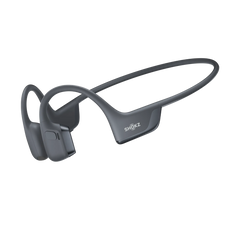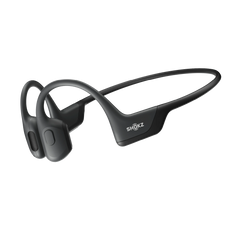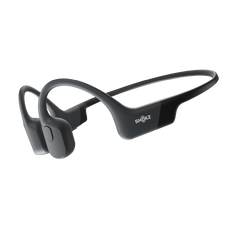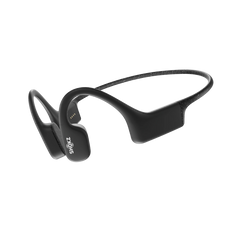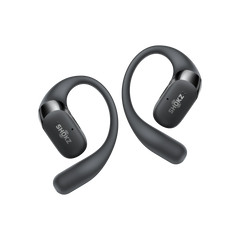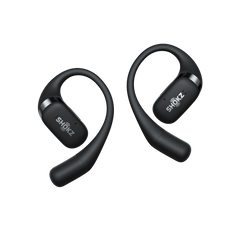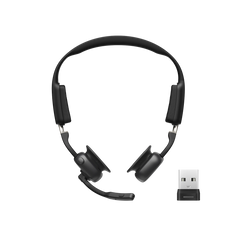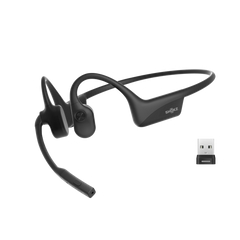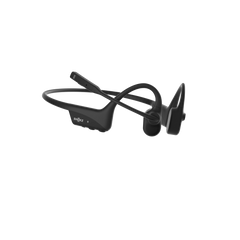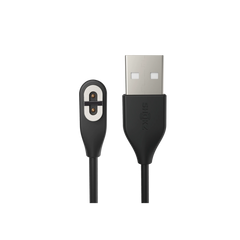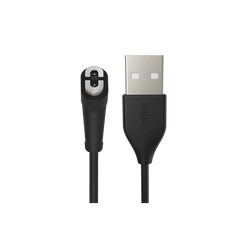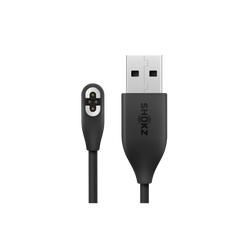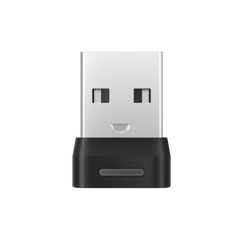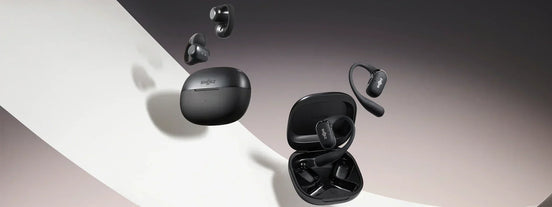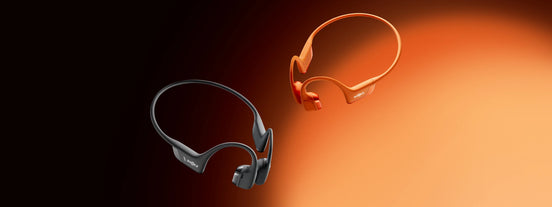Have you ever felt a sort of a buzzing or ringing in ears that stays long after you use headphones? If you are a headphone buff, you are not alone. The phenomenon of ear ringing, also known as Tinnitus, is fairly common right after you had a pretty long listening session or listened to loud music.
The good news is that you can drive away the ringing sound by adopting simple yet practical strategies. In this blog, we discover the causes behind this ringing sensation, the role of headphones in this and how open-ear headphones can help you enjoy music safely.
What Is Tinnitus, and its Relation to Music Sessions
If you find yourself asking, why my ear is ringing all of a sudden?, the answer lies in a condition called Tinnitus.
Tinnitus refers to a peculiar sensation when your ears feel a constant ringing or buzzing sound without any apparent reason. The problem can be traced to damage in the tiny hair cells in your inner ear that transfer sound signals to your brain.
Loud music, especially through headphones, disrupts hair cell function, which may send faulty signals to your brain, causing it to perceive phantom sounds. Research has indicated that repeated exposure to sounds above 85 decibels is a major risk factor behind ringing in ears.
How Loud Music Affects Your Ears?
Loud music hasn’t spared even music greats like Eric Clapton and Pete Townshend, who have expressed how they have battled with tinnitus due to being exposed to loud sounds. Their experiences tend to remind us why protecting your hearing is so vital, and it’s in your own hands.
How Headphones Contribute to Ringing in the Ears
While headphones are responsible for this ringing, no two headphones are equal. Here's how different types of headphones impact your ear health.
-
In-ear headphones fit tightly inside your ear canal, blocking incoming air and increasing pressure inside.
-
Over-ear headphones are relatively better when it comes to airflow but can nevertheless cause heat to build up.
-
Open ear headphones allow air to circulate freely, which prevents pressure from mounting and dramatically lowers your risk of ear discomfort and Tinnitus.
|
Headphone Type |
Ear Pressure |
Airflow |
Tinnitus Risk |
|
In-Ear |
High |
Low |
High |
|
Over-Ear |
Medium |
Medium |
Moderate |
|
Open-Ear |
Low |
High |
Low |
How to Select Ear-Friendly Headphones
Why Open-Ear Headphones Are a Smart Choice
Several features make open ear headphones far superior to traditional headphones. They are uniquely designed to wrap comfortably around your ears, which allows them to let in more air, thus reducing heat and pressure buildup.
By doing so, they not only minimize the risk of Tinnitus but ensure long-lasting comfort as you listen to your favorite music.
They come in handy if your ears feel worn out or if you sense discomfort when using traditional headphones.
Open-Ear vs. In-Ear
There are clear-cut differences between the two. While in-ear models isolate noise from regular sound, they work in a confined environment that adds to the internal pressure and blocks ventilation. In contrast, open ear headphones are not as good at isolating noise, but they are known to offer a more comfortable listening experience that’s healthy for your ears. The trade-off between sound isolation and health benefits is worth considering.
What to Look For in Open-Ear Headphones
As you set out to get an open-air model for your next listening session, here’s what you should look out for in a headphone.
-
High-quality sound with minimum or no distortion.
-
A headphone that is Lightweight and designed for everyday use.
-
Durability and ability to resist sweat.
-
Check out reviews from users who have sensitive ears or suffer from Tinnitus
Exploring what users with similar concerns have to say about a headphone can speak volumes about their credibility and help you choose the right pair for your listening needs.
How to Avoid Ear Ringing from Long Audio Sessions
Create a Listening Schedule
Extended or non-stop sessions cause the most damage to ears, so try taking breaks in between. Here’s an example of how to set up a listening schedule.
9:00 AM–9:50 AM:
For this time period, listen at a moderate volume, followed by a 10-minute break.
You can then resume listening between 10:00 AM and 10:50 AM.
60/60 rule
Audiologists have arrived at the 60/60 rule that prescribes the threshold for both the volume and the session time. As per this rule, it is recommended to keep volume well within 60% while limiting the length of a single session to 60 minutes or an hour.
Following this rule can prevent auditory nerves from getting overstimulated. You can make the process easier by using headphones with built-in volume caps, or a smartphone app can remind you when the right time for a break is.
Additional Tips to Protect Your Hearing
Checklist for Good Ear Hygiene
-
Ditch the ear care myth that we all have been following for ages- the use of cotton swabs. Thrusting cotton swabs deep in your ear can cause wax to clog further.
-
Try other options like ear-cleaning drops or rinsing your ear with warm water. Wipe the outer ear gently with a tissue.
-
Clean your headphones regularly to keep them free of dust and clean and dry
Stay Hydrated and Reduce Stress
Dehydration and high levels of stress are well-known to trigger Tinnitus and make it all the worse.
-
To counter this, stay hydrated by drinking plenty of water- you can even add fruits to water to infuse it with your favorite fruity flavors.
-
Managing stress can also go a long way towards reducing the intensity of tinnitus. Incorporate practices like yoga and meditation as part of your wellness routine, or take short walks to keep stress under control.
Adopting these small lifestyle changes can make a big difference in your ear health.

Enjoy Tinnitus-Free, Comfortable Listening with the OpenFit Series by Shokz
Shokz OpenFit Air
Shokz OpenFit Air headphones aim towards a safe listening experience by eliminating all possible sources of ear ringing. Boasting a unique open-ear design, these headworks are well-equipped to prevent pressure buildup and improve airflow around the ear canal.
The stress on the inner ear is reduced, which helps lower the risk of tinnitus and ear discomfort. These headphones are a great way to enjoy your favorite music safely and comfortably.
Shokz OpenFit
Shokz OpenFit headphones come with an innovative open-ear construction with the ultimate goal to keep ringing and discomfort at a distance. These headphones don’t have to be inserted directly into your ear canals like traditional headphones, meaning minimum pressure and heat build-up.
With this design, the risk of tinnitus will no longer spoil the pleasure of extended music sessions daily without compromising a bit on ear health.
Upgrade to Open Ear Headphones
Are you bothered by the constant ringing in your ears? Visit Shokz AU today to explore your options for the best open-ear headphones, like the Shokz OpenFit or OpenFit Air. Get ready to tune into a seamless audio experience like others with all-day comfort while giving your ears the care they deserve.
FAQ Section
Q1: Can open-ear headphones prevent Tinnitus?
A: Yes, as open-ear headphones work to reduce air pressure and facilitate air flow that immensely lowers the risk of getting Tinnitus
Q2: Is occasional ear ringing normal?
A: It's normal for ears to ring occasionally or for a limited time. However, frequent ringing is a sign of potential damage, which is why you should consult a hearing specialist for that.
Q3: What volume level is safe for listening to music?
A: A volume below 60% is considered the maximum safe level, beyond which the risk for damage is higher. 60-minute sessions to avoid hearing damage.
